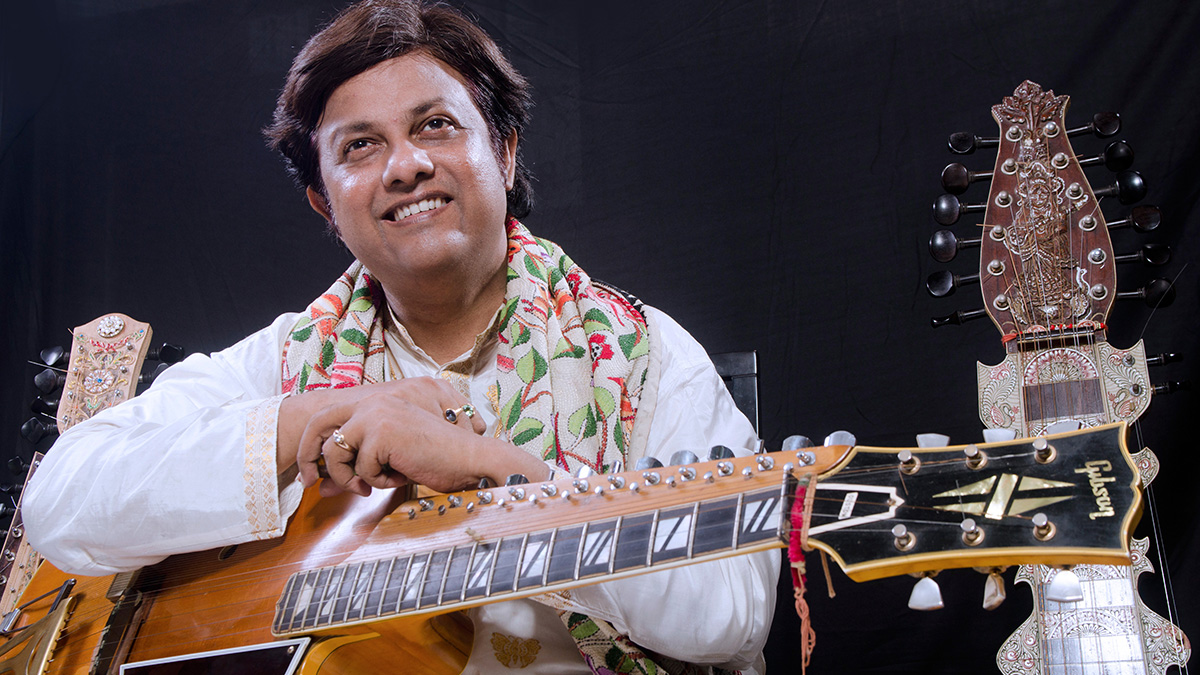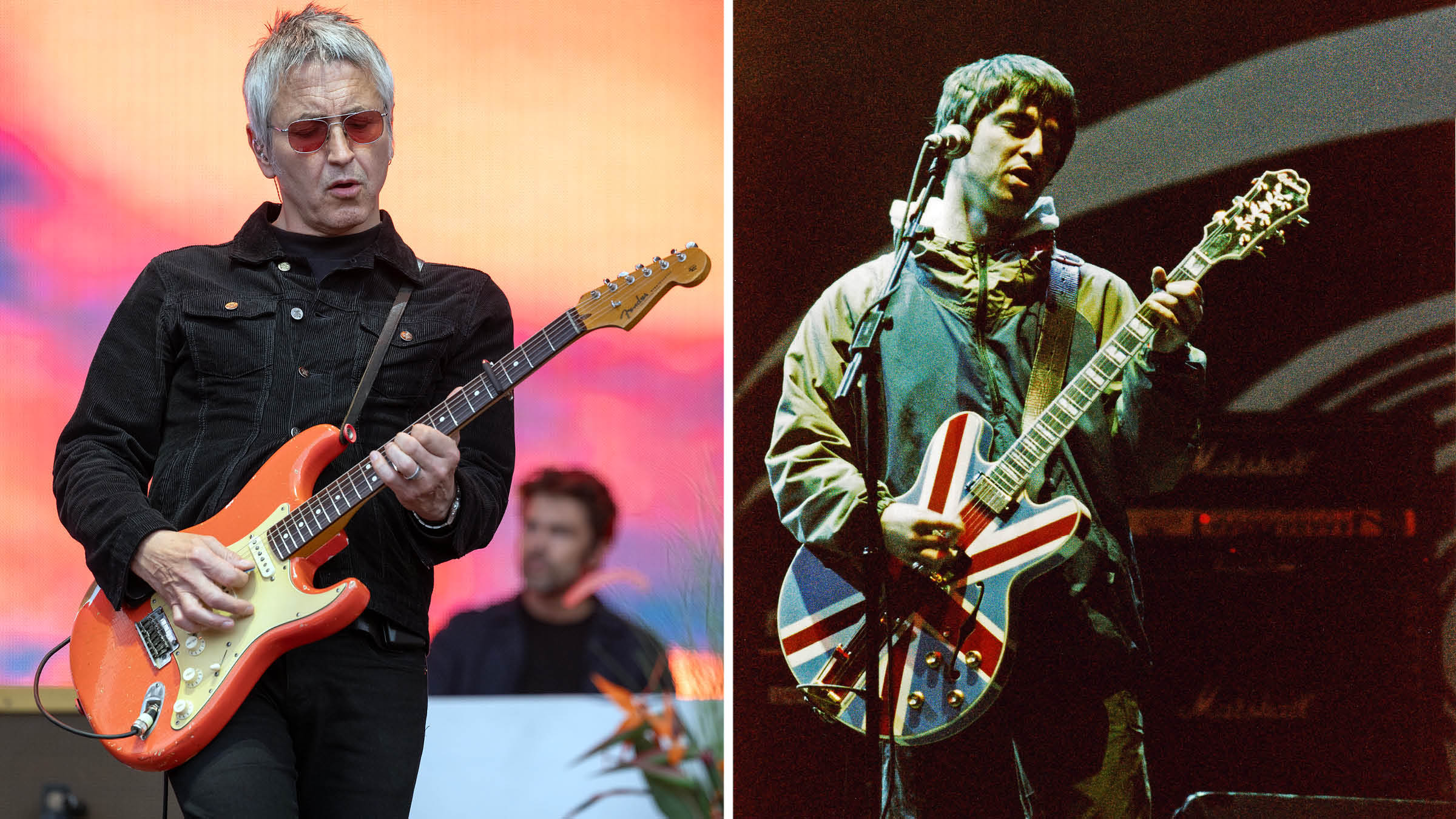How Indian slide maestro Debashish Bhattacharya made the 24-stringed chaturangui come alive on The Sound of the Soul
Bhattacharya is a genius of slide guitar whose new album is an uplifting twist on Hindustani classical ragas, featuring “the best instrument to unify cultures”

When Indian slide guitar master Debashish Bhattacharya gives a concert, the venue is usually packed with other guitarists. They come to marvel at his musicianship, which combines the highly disciplined virtuosity of Hindustani classical tradition with the adventurous spirit of a world music trailblazer.
He has performed and recorded in a variety of contexts – collaborating with guitar greats like John McLaughlin, Derek Trucks, Henry Kaiser, Bob Brozman, Martin Simpson, and African kora master Ballake Sissoko. But his newest recording, The Sound of the Soul, is a sublime offering of pure, unadulterated Bhattacharya – a deep dive into the traditions that form the core of his artistry.
All based on classical ragas, the album’s four tracks feature Bhattacharya on the chaturangui, a 24-stringed instrument of his own invention, accompanied only by percussion – either tabla or pakhawaj. The album pays tribute to one of his key musical mentors, the renowned Indian sarod master Ali Akbar Khan, born a hundred years ago last year.
“Baba Ali Akbar Khan and his father [the equally revered Allauddin Khan] were my inspiration from when I was 2,” Bhattacharya says. “And they still are.”
Training in Indian classical music is based around a system of family lineages, called gharanas. Bhattacharya’s parents were both accomplished singers, and he trained in that tradition as well, making his debut on All India Radio at age 4. But from a very early age, he became fascinated with Hawaiian steel guitar, which had first entered India’s musical culture as part of the Hawaiian guitar craze of the 1920s-30s.
There was no established lineage of Hindustani classical slide guitar playing when Bhattacharya was young. But he found guidance from Akbar Khan, whose own principal instrument, the sarod, bears a certain affinity with slide guitar. A fretless instrument with a metal fingerboard, the sarod – like slide guitar – is capable of producing the plaintive microtonal pitches that are essential to Hindustani classical music.
Through Akbar Khan, Bhattacharya met Brij Bhushan Kabra, the man who had first brought slide guitar from the Indian pop realm into the rarefied world of Indian classical, adapting his Gibson Super 400 archtop with the kind of sympathetic drone and rhythm strings found on many Indian stringed instruments.
All the latest guitar news, interviews, lessons, reviews, deals and more, direct to your inbox!
Bhattacharya studied intensely with Kabra for many years. But, as Kabra was also Ali Akbar Khan’s student, Bhattacharya maintained close ties to Khan’s gharana. In this tradition, the student/teacher bond is as much spiritual and familial as it is musical.
“Ustad Ali Akbar Khan named me ‘Devish,’” Bhattacharya says. “Fondly and musically, he gave me what I needed. This album is a humble tribute to his centennial. Khan Sahib’s spirit of melody and essence of emotive rasas [colors/moods] are all over the album.”
Bhattacharya built his first chaturangui – a hollowbody, round-hole acoustic guitar modified with additional strings and raised bridge and nut for slide playing – in 1978, when he was just 15.
The design grew in sophistication and complexity over the years. Circa 1991-’92, he began building chaturangui with hollow necks for added resonance. The design was partially inspired by the Weissenborn hollow-necked Hawaiian slide guitars. “But, as well, you must remember that all our classical Indian instruments are hollow,” he says.
The chaturangui string arrangement evolved as well. Initially an instrument with five principal strings (tuned D, A, F#, D, A), it grew to a configuration of six principal strings (D, A, F#, D, A, D) with two bass drone strings and 14 sympathetic resonating strings on the bass side of the principal strings and two rhythm strings on the treble side.
Bhattacharya’s family of custom instruments also includes the gandharvi – effectively a 12-string chaturangui variant – and the anandi, a ukulele/mandolin hybrid which, he says, “has a folksy tone to play any genre of music, including rich Indian melodies, flamenco, blues, and any others you name.”
Most recently, he introduced the pushpa veena, a 25-string instrument fashioned from a single piece of teak with a goat skin top. “Pushpa veena is a different world,” he says. “It’s a culmination of cultural soundscapes from different continents. A dream, a lifelong cry and a dedication all together is pushpa veena.”
But for The Sound of the Soul, Bhattacharya employed just two chaturangui. “The first track [was done] with a solid neck, and all others are on a hollow neck and larger diaphragm,” he says. With all those resonant strings at his command, Bhattacharya doesn’t necessarily need a traditional drone instrument such as the tambura.
He can draw from the warm resonance of the guitar to create meditative, droning backdrops, while filling the foreground with the glorious magnificence of raga’s seemingly infinite resources. The Sound of the Soul is remarkable not only for its dazzling displays of slide guitar virtuosity, but also for the yearning, poetic lyricism that Bhattacharya brings to simple, yet beautiful, melodic passages.
The same level of excellence and beauty is embodied in the exquisitely constructed and ornamented Bhattacharya-designed instruments available on a custom-order basis at debashishcreations.com.
Through the impeccable craftsmanship of his instruments and his music, Bhattacharya builds a compelling case for the guitar as the universal instrument. “It is the best instrument to unify cultures,” he says.
- The Sound of the Soul is out now via Abstract Logix.
In a career that spans five decades, Alan di Perna has written for pretty much every magazine in the world with the word “guitar” in its title, as well as other prestigious outlets such as Rolling Stone, Billboard, Creem, Player, Classic Rock, Musician, Future Music, Keyboard, grammy.com and reverb.com. He is author of Guitar Masters: Intimate Portraits, Green Day: The Ultimate Unauthorized History and co-author of Play It Loud: An Epic History of the Sound Style and Revolution of the Electric Guitar. The latter became the inspiration for the Metropolitan Museum of Art/Rock and Roll Hall of Fame exhibition “Play It Loud: Instruments of Rock and Roll.” As a professional guitarist/keyboardist/multi-instrumentalist, Alan has worked with recording artists Brianna Lea Pruett, Fawn Wood, Brenda McMorrow, Sat Kartar and Shox Lumania.

